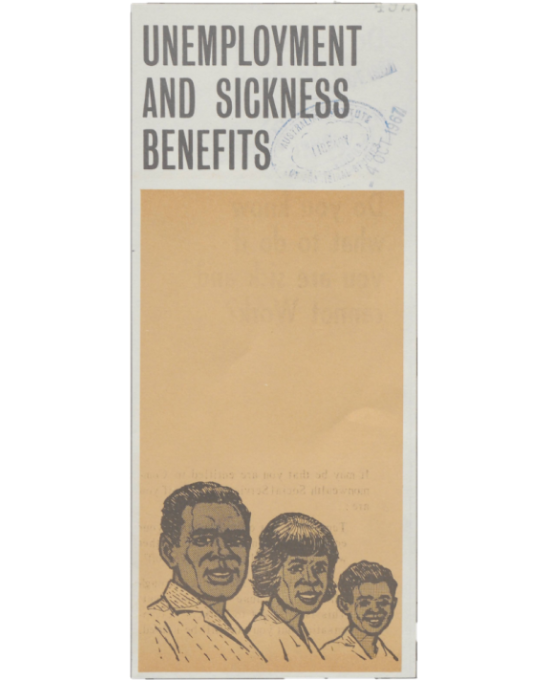
State pamphlet tells Aboriginal people about payments
Due to a lack of DSS's presence in Western Australia, the state Department of Native Welfare published a pamphlet about payments Aboriginal people could get, reiterating earlier advice to apply through state-based officers.
When you are out of work and need help, call at your nearest Native Welfare Department Office and ask the staff for advice about Unemployment Benefits ...
| Attachment | Size |
|---|---|
| unemployment-and-sickness-benefit-pamphlet.pdf | 1.51 MB |
| Attachment | Size |
|---|---|
| unemployment-and-sickness-benefit-pamphlet-plaintext.docx | 47.15 KB |
In 1966 the government changed the Social Services Act to take out passages that excluded Aboriginal people from getting government payments. The Western Australian Government produced this pamphlet in 1967 to let people know about the payments they could get.
The pamphlet covers how to get Unemployment Benefit and Sickness Benefit. While the content doesn’t address Aboriginal people directly, the drawing on the cover of an Aboriginal man, woman and child shows this is the audience.
The tone is targeted to an Aboriginal audience. The pamphlet tried to explain the complicated ‘work test’ in a simple way. Under a reminders section, it says people wouldn’t get benefits if ‘there was plenty of work about and there is evidence to show that you might have got work if you had tried a little harder to do so’.
The Western Australia Department of Native Welfare produced the pamphlet and not the federal government, even though social services were a federal government responsibility. This was because the Department of Social Services (DSS) didn’t have offices in remote Western Australia (Sanders 1985) and relied on state officials for help delivering social services. The pamphlet is in a similar style to Citizens, another piece published by the Department of Native Welfare in the 1960s, which told Aboriginal people how the state expected them to live.
The pamphlet encourages people to apply for their payments directly through the Department of Native Welfare rather than through DSS. It insists that their District Officers ‘will help you and will be pleased to do so’. This advice goes against the instruction in the 1963 Yinjilli leaflet by the Federal Council of Aboriginal Advancement that had warned people against going through ‘Aboriginal Welfare Departments’. This was because state officials, such as District Officers, had often made it difficult for Aboriginal people to get payments in the past.
Although paternalistic in tone, this pamphlet is an early example of a government agency trying to inform Aboriginal people about the payments they could get. It is also a rare example of the government promoting Unemployment Benefit to Aboriginal people. While eligible in theory, Aboriginal people’s access to the payment was tightly controlled, especially in remote areas. Restrictions to access to Unemployment Benefit continued well into the 1970s.
The Unemployment and Sickness Benefits pamphlet is held in AIATSIS’s collections.
Citation
Department of Native Welfare (1967) Unemployment and sickness benefits [printed pamphlet], Department of Native Welfare, Western Australian Government.
